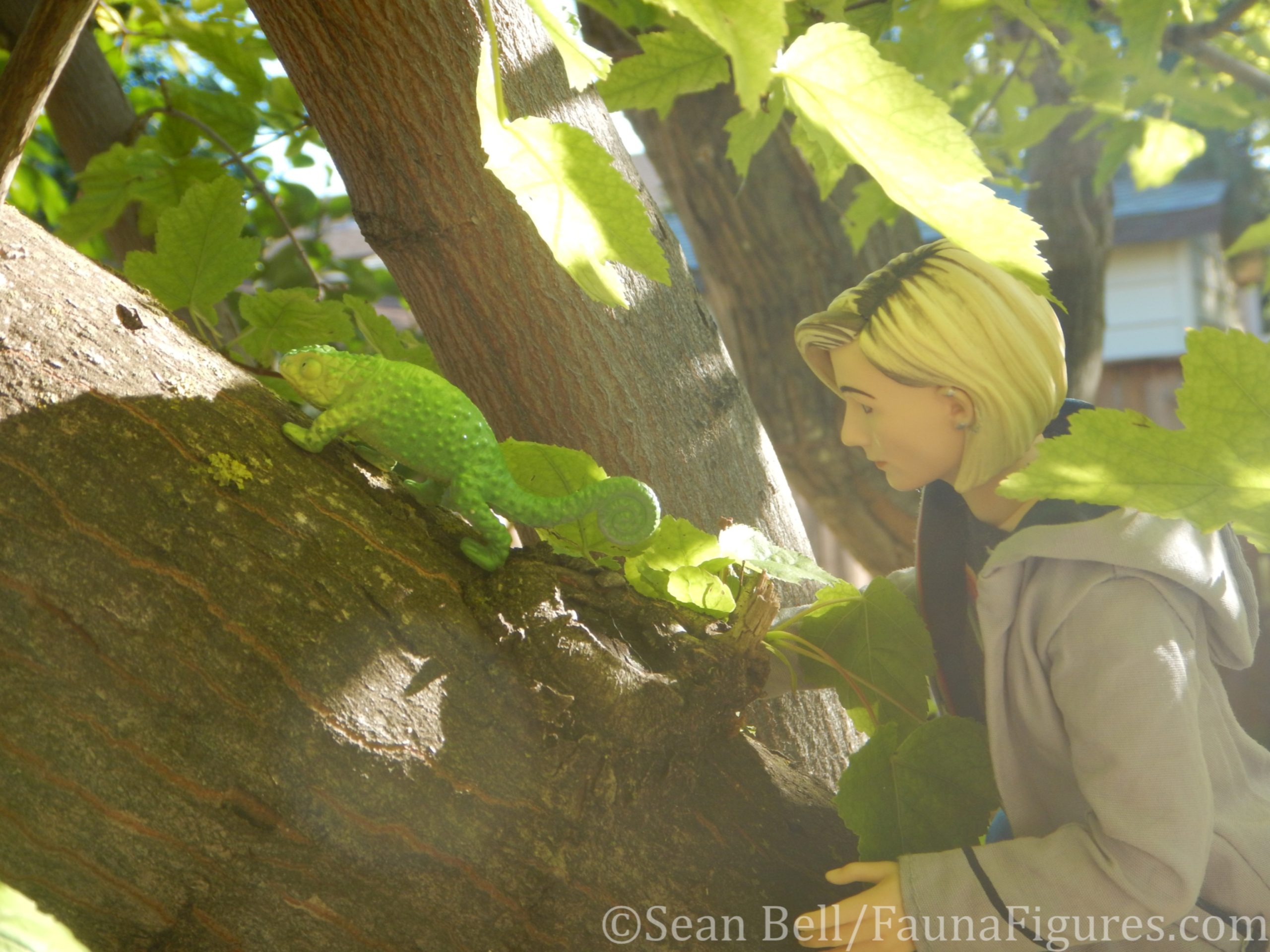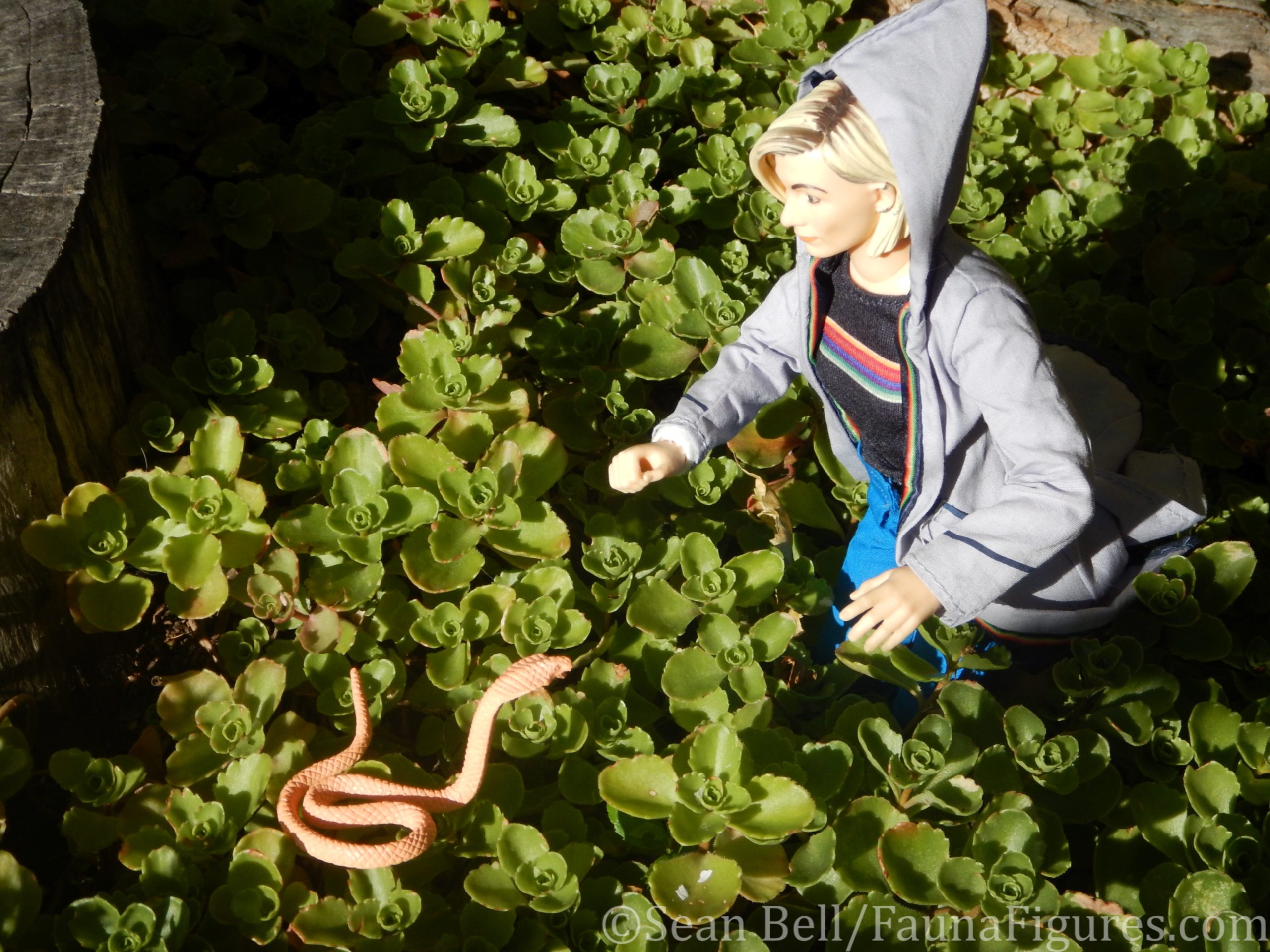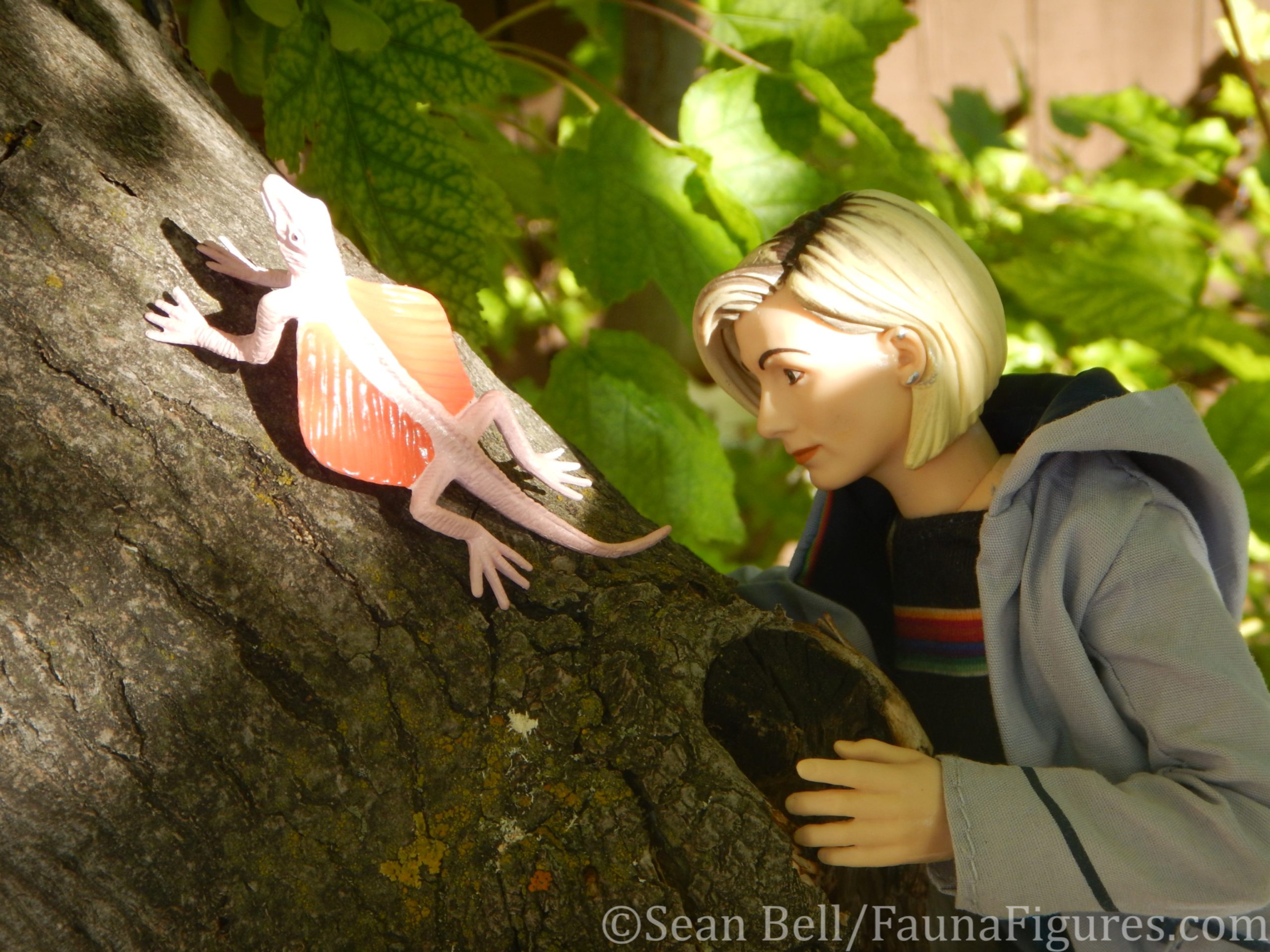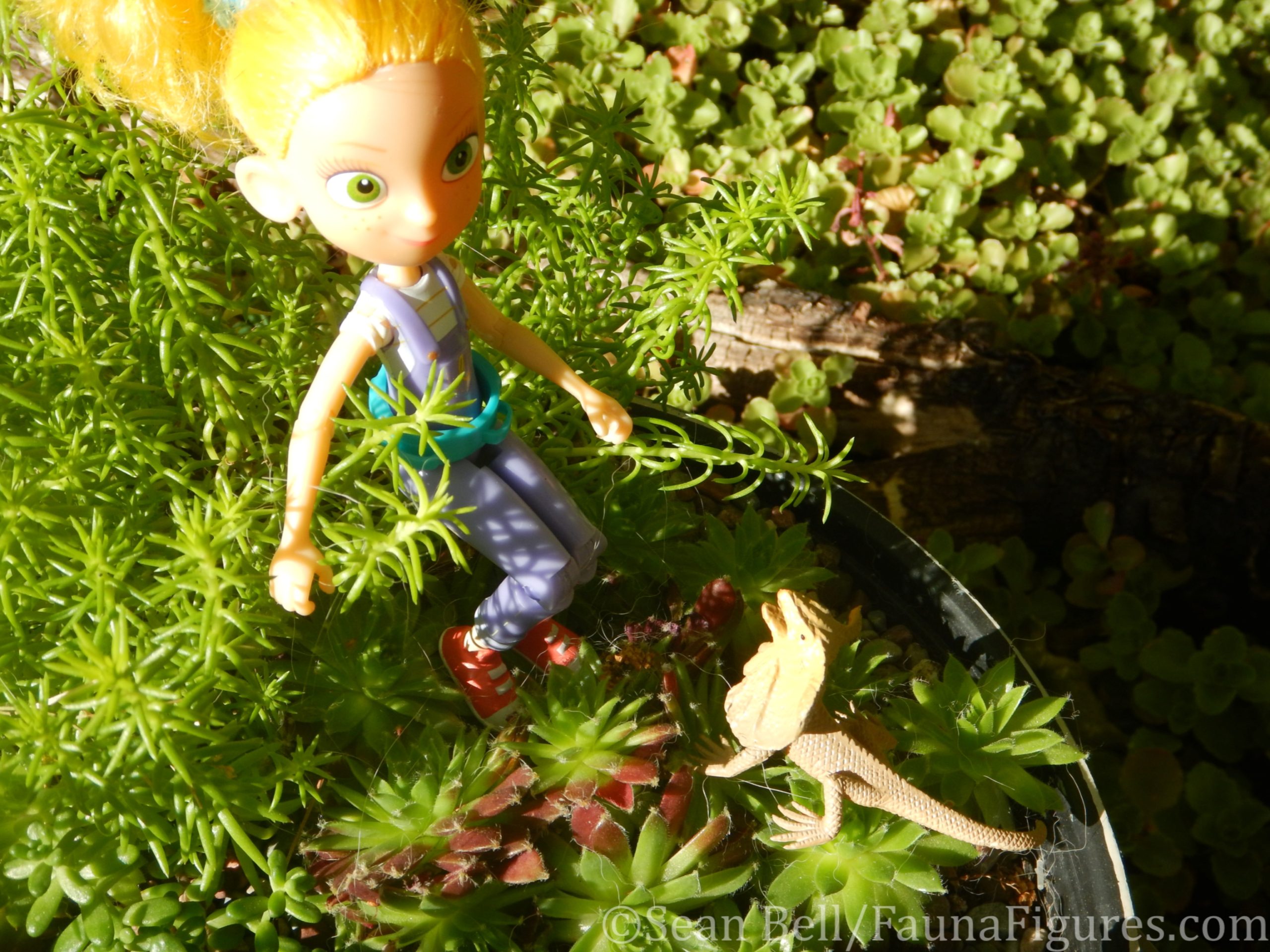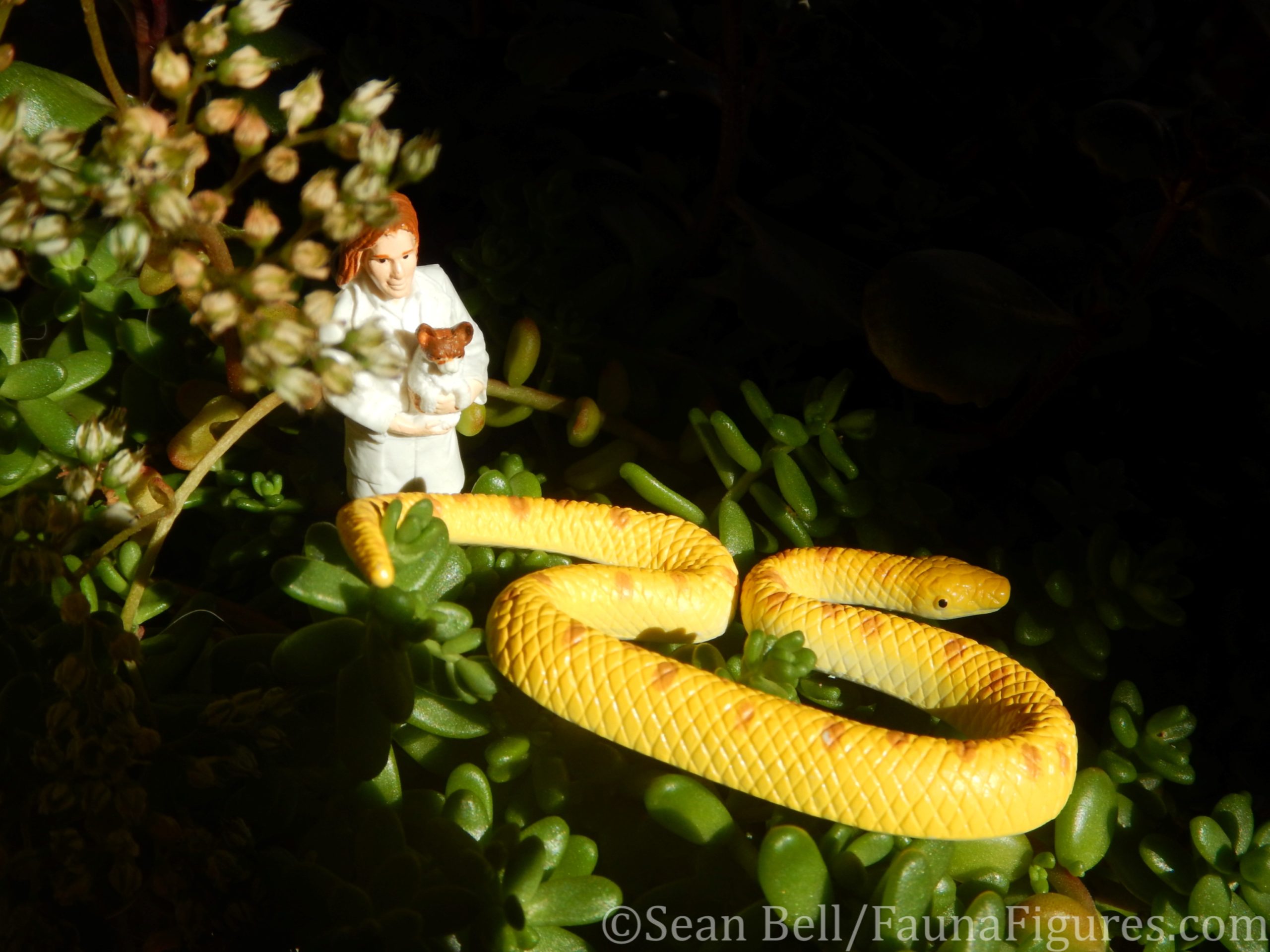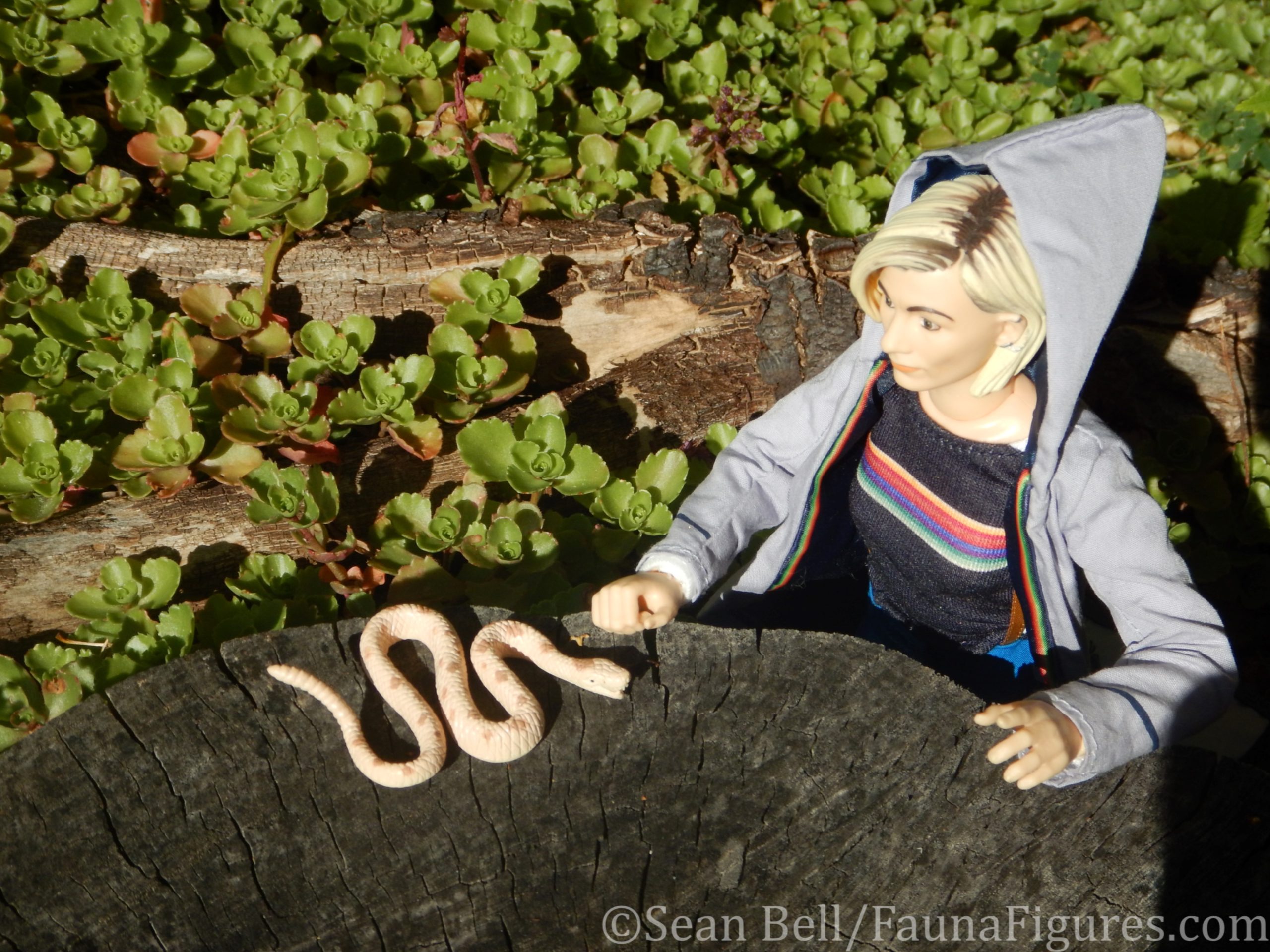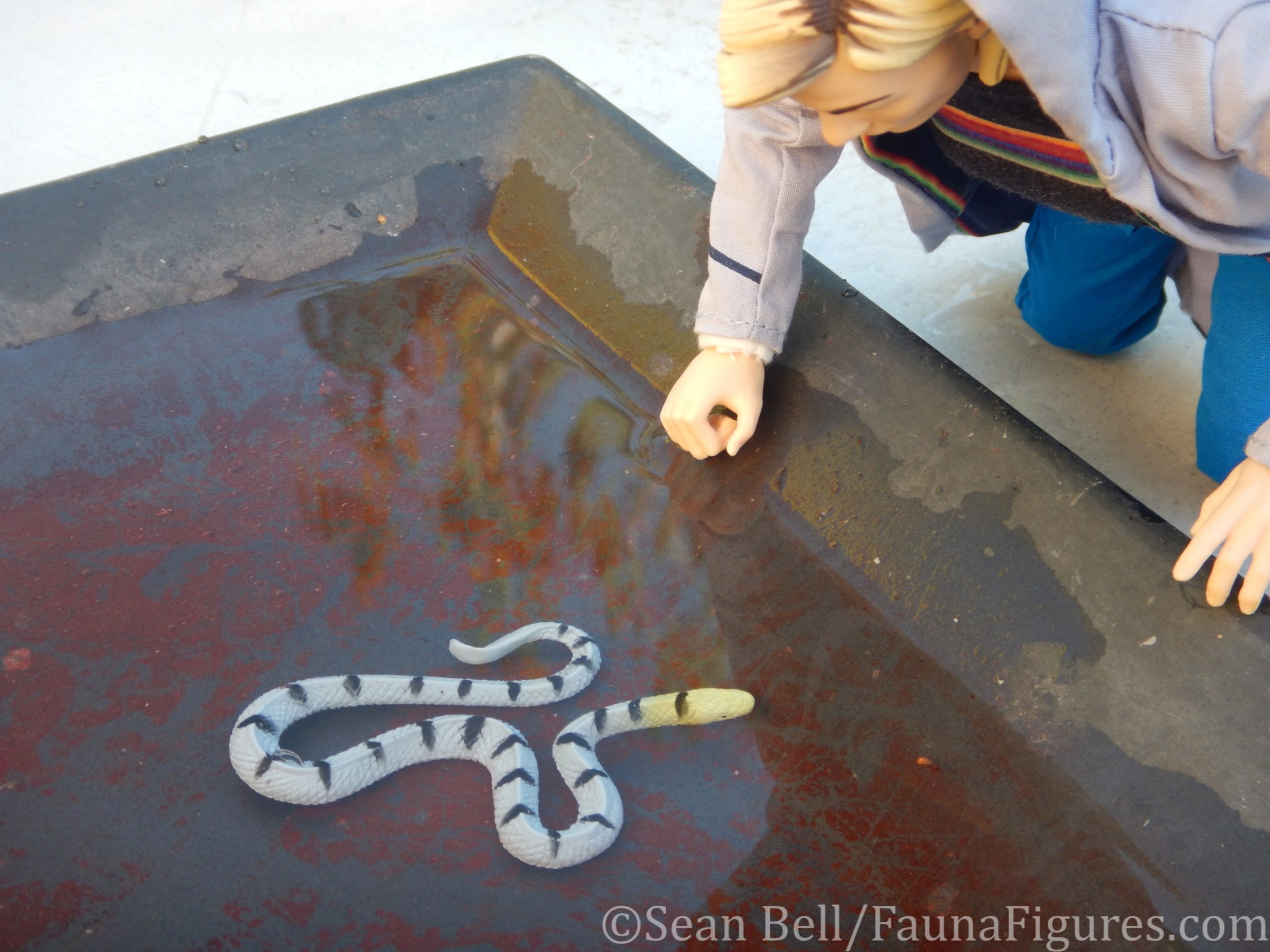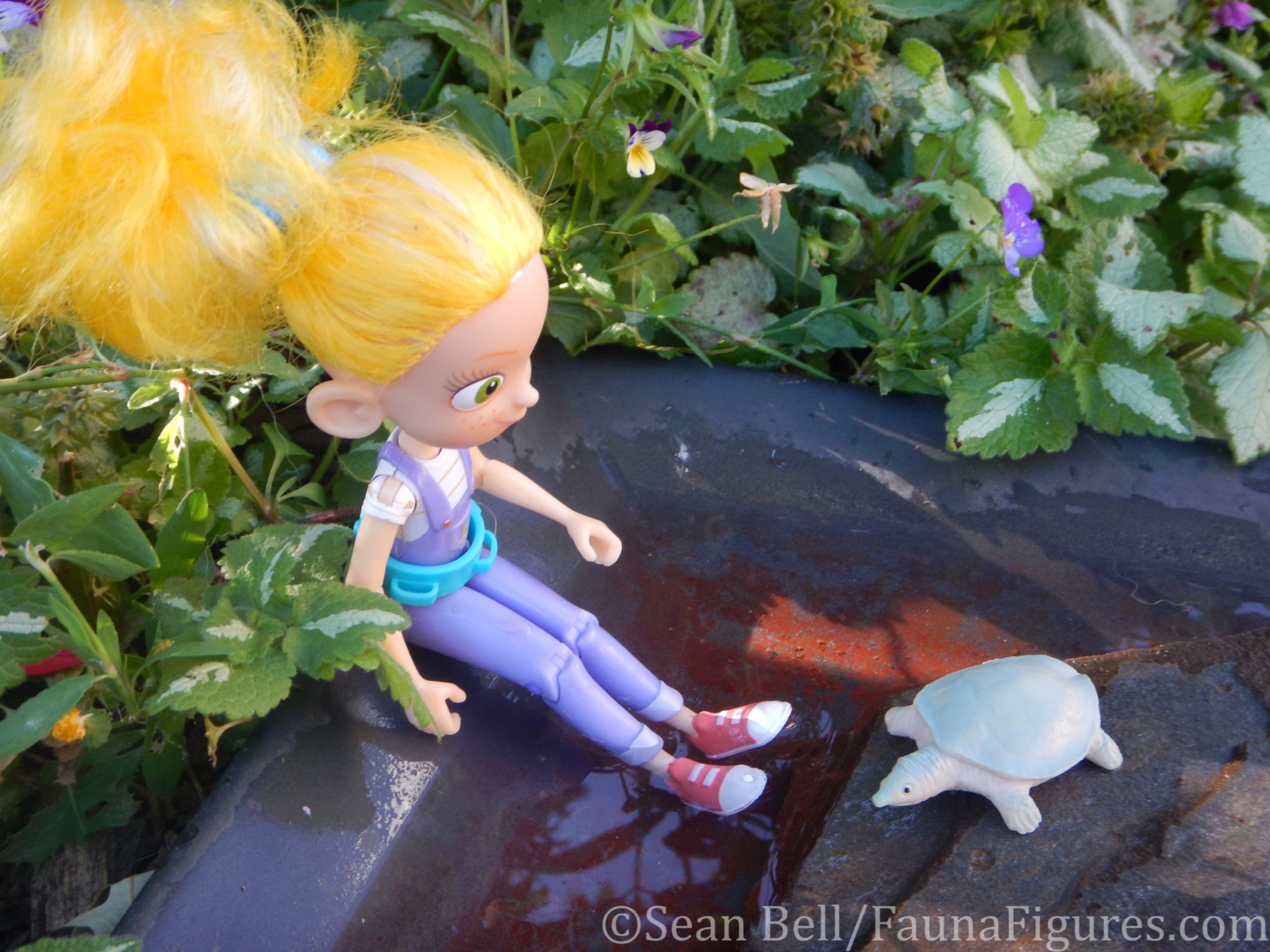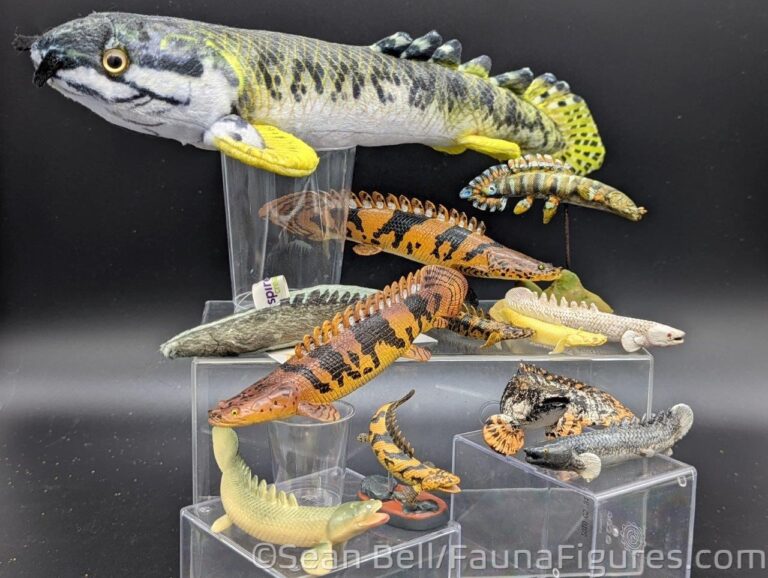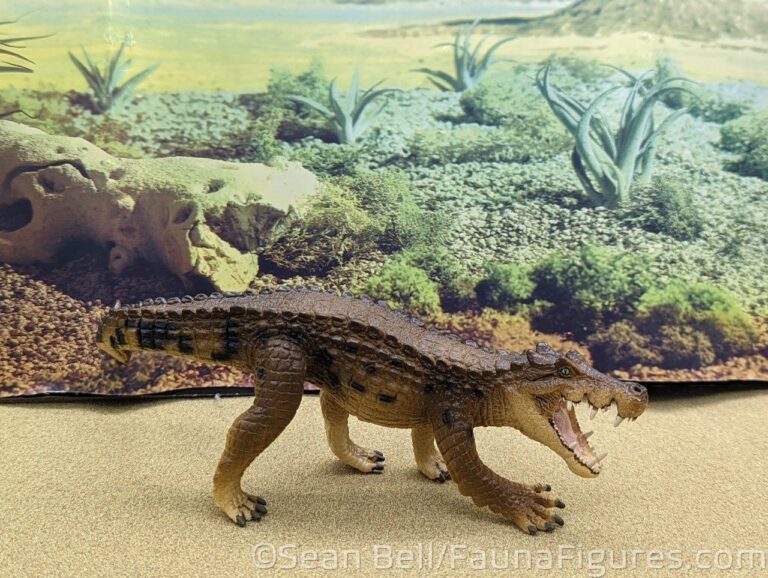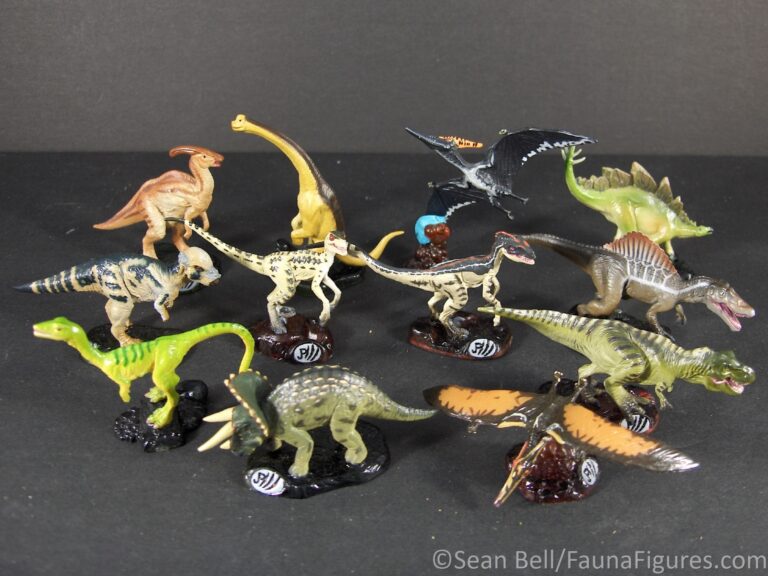
So two Innovative Kids Groovy Tubes set in one week…sometimes the Random Number Generator doesn’t seem so random…Anyway, kind of exciting to finally get to one of the animal sets. This is actually the first one that I saw in a store, and couldn’t believe some of the animals inside. There were some that I believe still haven’t been tackled by a more conventional company and I honestly don’t know why. What I can say is that this set could possibly be the most taxonomically complete Reptiles set by any company. Period. And funny enough, of what we might call the five living groups (lizards, snakes, crocodilians, turtles and tuatara) they are presented in relative amounts similar to their current numbers of species–5 snakes, 4 lizards, 3 turtles, 3 crocs and 1 tuatara. Seriously, a commercial tuatara that wasn’t made and sold be a Japanese or Australian company…sadly too many people missed out. Anyway, on to the reptiles! Alphabetically as always.
Anaconda (possibly a green anaconda?)
Our very first reptile is a familiar one, an anaconda. Probably a green because, as we go along, sometimes the book is more specific. Or the image is specific enough for an otherwise generic figure. The anaconda is fine. A little unremarkable, the head doesn’t look very anaconda-like, but then anaconda figures are surprisingly less common than one would expect. But really, it could be any boa.
Anole (maybe a brown anole?)
Our first lizard is also a first as a figure, I think. It is labelled as an ‘anole’ although like the rest, the species is not listed. Within the book they refer to a brown anole, but that doesn’t necessarily mean anything. In looking at this figure, that is probably the weakest part of the set; sometimes the figures are kind of vague, even though they are definitely new as whatever species they are. The anole is kind of nice, as it is not the familiar green anole, nor is it one of the big obvious ones like a Cuban Knight anole. It even has the flared throat, which reflects what is seen in the book. Only major downside is how scaly it is at this size.
Chameleon
Next up we have a chameleon. Again, the species is pretty indeterminate. The book is also no help. It is pretty generic, so a common seems as likely as any (although if anyone with an expert eye told me otherwise, I would have no reason not to agree). Again, a nice enough figure, and an original one at that. Given the fame of chameleons for their colour changing, it’s interesting that they went with just an overall green colour, but that’s not such a bad thing. At least they didn’t try to do the tongue.
Cobra (spitting cobra?)
It couldn’t be a reptiles set without a cobra, and this one is pretty unique. I would guess a spitting cobra for a couple reasons–the forward stretched face, and the text in the book and for the game! Realizing that other cobras can learn to spit too, but it’s a detail that is part of the game. Plus, the light pink colour could be a weird attempt at a red spitting cobra Naja pallida which would be unique (more so than the general lack of spitting cobra figures I suppose). It lacks any neck markings, but Innovative Kids’ paint designs tend to be far less innovative than their choice of species or even sculpts.
Crocodile (generic, probably a Nile)
Next up we have a crocodile. Just a crocodile. While the sculpt is definitely original to Innovative Kids, overall there isn’t much original about it exactly. I would refer to it as a Nile crocodile only because there is one in the book. It could probably work as any small green crocodile really. That’s about all there is to say on it.
Flying dragon
So this figure is the one that I first saw that got me kind of excited! A flying dragon, genus Draco. The species, as always, is not specified but the species in the book is a common. I knew I had to get this set just for the dragon if nothing else, since there aren’t any others (well, one other that I know of, but even less easy to find). So just for being a very uncommon figure of an uncommon animal, it makes the whole set worth it. It’s too bad that they didn’t paint it even a little more realistically though…even the grey of the anole could have worked. But it’s fun to at least have one.
Frilled lizard
We have another lizard here, the fourth and last in the set, and it is one that is hard to miss, a frilled lizard. The distinctive frill gives some major distinction to this figure, which makes its inclusion in the set pretty logical, yet there really aren’t that many small figures of them which is surprising. My photo is terrible, but they did a decent job on the paint and sculpt of the figure.
Gharial
Next we have another figure, the second crocodilian, an Indian gavial, which is clearly less generic than the crocodile. The very light violet colour is kind of strange–I guess they didn’t want to have everything be green, but come on, they could have gone with tan or grey or something…No matter, this is another animal that while not unheard of as a figure, is definitely less common than one might expect.
Python (probably meant to be a reticulated)
Next we have a python in the set. It would be great to compare the giant boa and giant python, but of course neither is terribly accurate. At least they are obviously different enough in sculpt, and the python head is more python-like so that’s good. As for the identification to reticulated python, the first clue comes from the book, where that is the species list. And while the colouration of the figure is certainly not right…it does match the book, where the choice of photo is of an albino, xanthic, or leucistic specimen. Plus, the included game makes a length reference and there’s no other python at that length!
Rattlesnake
Next we have the rattlesnake. As figures, rattlesnakes seem kind of uncommon, especially compared to cobras and boas/pythons. And random, generic snakes. One would think that having an obvious differentiation like a rattle for a tail would make them more popular, but I guess it’s hard. Also hard, guessing the species. It’s not especially clear and given the pose and colour I’d probably go with sidewinder, but the book only refers to the diamondback, so I’ll go with that I guess.
Sea Snake (banded sea krait)
The final snake in the set, we have a sea snake, although the paint job and even the exaggerated head colour point to a banded or yellow-lip sea krait. As far as sea snake figures go, this is a fairly popular one to make, not that there are a lot of others. This figure is decent, although the tail could have been flatter. It’s at least nice to see, although the set makes the unfortunate (but normal) choice of choosing only giant constrictors or venomous snakes…maybe one of them could have been replaced by a non-venomous one? Or a small species? Oh well. Someone else will have to do it.
Sea Turtle (leatherback sea turtle)
Now we get to the turtles, and while not specified on the figure, the sculpt is a leatherback sea turtle. It’s hard to mistake it for any other. It’s nice enough. Also, interestingly, the set will make sure to capture at least one of each overall ‘type’ of turtle–this sea turtle, a tortoise, and a freshwater turtle (or terrapin in some places). It’s hard to get a turtle entirely wrong.
Softshell turtle
The freshwater turtles are represented by a softshell turtle. It’s a good choice, and the appearance probably helps set it apart a but from the tortoise below (given the nature of the sculpts who knows what it could have been). It’s a plain little figure, but nice to have something a little different.
Giant tortoise
Remember when I said it’s hard to get a turtle entirely wrong? This so-called giant tortoise tried. The book refers to the giant Galapagos tortoises, so I guess that’s the intention, but it really doesn’t have the right anything about it. The neck, the legs, the kind of flat shell…it doesn’t work. Which, again, is why the choice of a softshell was good, to maintain that distinction; had it been a slider or other terrapin, it would have been harder to tell it apart from the ‘tortoise’ (markings on the figure notwithstanding).
Tuatara
And our final figure features an animal that usually gets left out of reptile sets…the rhychocephalian Tuatara of New Zealand! Admittedly, not a really familiar animal beyond people with an affinity for knowing as much about animals as possible (animal nerds. There, I said it) but by it’s status as the ‘fifth’ major living group, it should at least show up more. There are other figures, and I have several myself, but I would think that this is the only one I know of from an inexpensive, broad-market set. The next closest I can think of is the Colorata set, and those are far more expensive and hard to obtain. So good work Innovative Kids. Almost makes up for that tortoise.
Finally, we have the game for the set. Unlike the other two sets, which were more traditional board games, this one is based on drawing tiles with single adjectives on them, and then trying to form one of the animals on the grid; you get points for what you can match in full, and extra points for being the first to do it (indicated by being the player with the figure). They don’t include all 15 in the grid, but a little creativity could probably modify that. More fun (to me…again, nerd) than just a simple path on the board.
So there we have an animal-oriented Groovy Tubes set. I hope at least some people can see what drew me to some of them, and why I’m so disappointed that the line is completely gone now. Raging Reptiles was part of their mid-run releases; the earlier ones were almost traditional in their themes (insects, dinosaurs, African, sea life) but I didn’t get them–the figures were almost all the same figures that show up in every bin set. By the time of this Reptiles one, they had started producing their own animal (etc) models, and many are still unseen anywhere else in a general market. I really hope that anyone interested in this or other sets can find them at a decent price; and maybe someone will get inspired to try and do something like this again.



